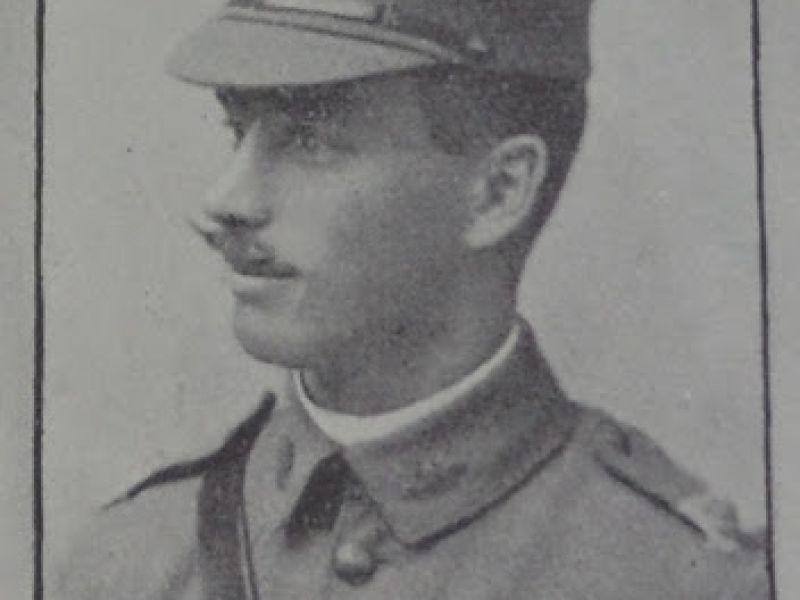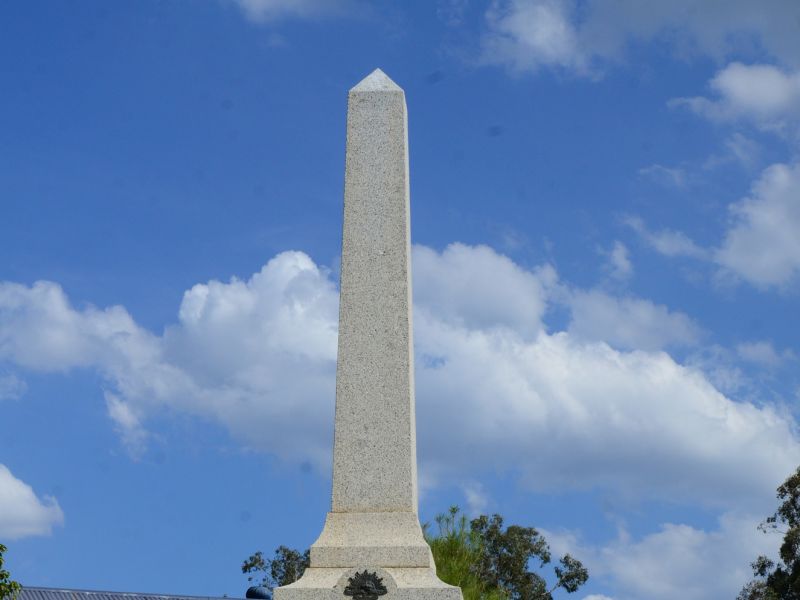George Christian Fraser
George Christian Fraser was born in Newton, Sydney in 1888. He was the fourth child of Angus and Mary Ann (nee Smith) Fraser. Like Arthur Wilson,George’s family also knew of heartache with his youngest sister, Emma Louise, dying at 7 days old in 1896, and his second youngest sister, Mary Christina, dying in 1916 aged 16. George’s mother passed away in 1902. His father remarried in 1903. Records indicate that at some stage George attended the school at Towong, near Corryong. He was also a boarder at St Patrick’s College, Ballarat, being listed in their 1916-1917 College Annual as serving overseas.
George enlisted on the 28th of April 1916 in Sydney, NSW. He stated that his occupation was Station Overseer and Accountant. He was allocated to B Company, 3rd Reinforcements for the 36th Battalion, being promoted to acting Sergeant. After initial training at Liverpool, on the outskirts of Sydney, the battalion left for the United Kingdom on the 13th of May aboard HMAT A38 Anchises, disembarking at Davenport, England on the 11th of October, 1916. Upon arriving, George was transferred to the King George Hospital and then to the 3rd Australian Auxiliary Hospital at Dartford with pneumonia.
After being discharged in late November, George proceeded overseas to France aboard HMT Princess Victoria, a former railway ferry that operated between Strarraer in Scotland and Lame in Northern Ireland. During the first few months of 1917, George underwent various training programs around the town of Etaples, the main infantry base for the BEF (British Expeditionary Force), in France. He was also reduced to the rank of private, not because of disciplinary action but because there was a full quota of NCO’s (non-commissioned officers) at that time in the battalion.
In April of that year George’s leadership abilities were recognised and he was sent to an Officer’s Cadet Battalion in Cambridge, England. After successfully passing the course and being promoted to the rank of 2nd Lieutenant, he was transferred to the 33rd Battalion at the end of September. It was policy not to send new officers back to their former battalion due to possible conflicts of interest with former mates in the ranks.
On the 11th of October the 33rd Battalion began its approach march towards their rally point for the coming operation against the Germans in the Passchendaele sector in Belgium. Upon arriving at their assembly point they discovered that the 36th Battalion had, mistakenly, already taken it, so they moved and relocated nearby. It had taken them 7 hours and 21 minutes to complete their march.
The 15th of October was a fine day weather wise, and the front was fairly quiet, as reported by the 33rd Battalion War diarist. In the evening the battalion relieved the 43rd Battalion in the front line. Six posts were established in the front line. During the posting of No. 1 Post, 2nd Lieutenant George Fraser, age 29, was killed by sniper fire.
Details in George’s Red Cross file include a number of witness reports on how he was killed. While some appear to confuse George with another officer, others include witness statements from soldiers who were with him on the night he was killed. One witness, Sergeant H. F. Quinell of C Company, 33rd Battalion states; “On about the 15.10.17 the Battalion was holding the line at Passchendaele Ridge. About 7.30 for 8pm a party of about 30 set out to dig a Strong Post and informant and the Lieut: went on about 200 yards ahead to find a suitable spot for the strong post. The Hun spotted them and fired some verolite into the air so they could see clearly and the Lieut: was killed outright by a shot through the head. Informant was next to him at the time and saw him fall. After the Lieut: was killed the main party came out and dug the strong post, the Germans having evacuated as soon as the shot was fired. Next night Informant helped to bury the Lieut: on the spot where he was killed. His belongings were taken from him and handed in at battalion Headquarters.
Informant added that he was a fine Officer and there was not a gamer man alive.”
Another statement by the commanding officer of C Company, Captain W.J.C. Duncan includes; “ … It was his first time in the line as an officer and his conduct was beyond all praise. He had only joined the Battn. [sic] as an officer having joined us from the 36th Battn. AIF. His only fault was that he was too brave and reckless.”
George’s initial grave was never located, and he is remembered on the Menin Gate Memorial, Ypres, West-Vlaanderen, Belgium, The Australian War Memorial Roll of Honour, and the Corryong War Memorial. For his service during the First World War, he was awarded the British War Medal and the Victory Medal.

 Stephen Learmonth
Stephen Learmonth